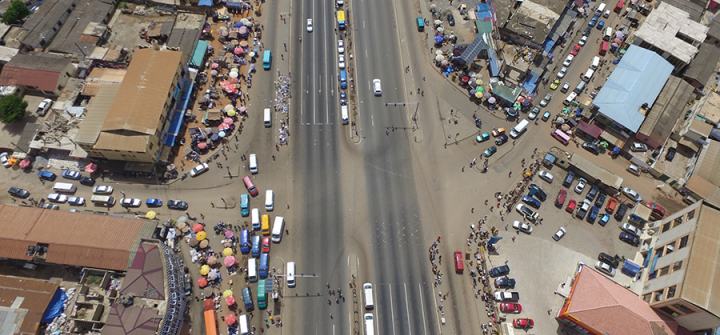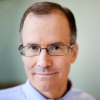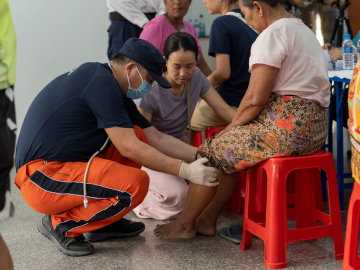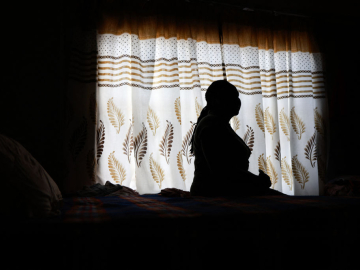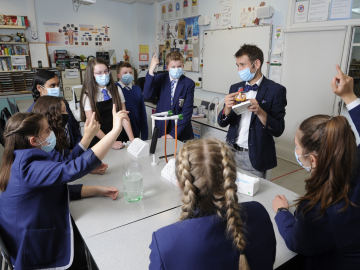The Road’s Toll: How to Reduce 1.35 Million Traffic Deaths
The encouraging news is that even as global population and vehicles on the roads are increasing, road traffic fatalities are leveling off.
However, about 1.35 million road traffic deaths still occur each year, according to the WHO. Actually reducing the 8th leading cause of death globally will take sustained, concerted effort. From the individual perspective, more people will have to use seat belts, wear helmets, reduce their speed and avoid drinking and driving.
“If we can see those 4 risk factors go in the right direction, we know that lives will be saved,” says Kelly Larson, who directs road safety at Bloomberg Philanthropies. (Michael R. Bloomberg is a benefactor of Johns Hopkins Bloomberg School of Public Health, which publishes Global Health NOW.)
The trick is how to persuade people to change their driving behavior and how they protect themselves. And, of course, it’s important for government leaders to change traffic laws, ramp up police enforcement and invest in infrastructure improvements. The Philanthropies has followed this strategy in dedicating $260 million since 2007 to reducing global traffic deaths, says Larson.
In a discussion with GHN during last month’s 72nd World Health Assembly in Geneva, Larson discussed strategy, challenges and successes in stemming road traffic deaths and injuries.
More than 90% of road traffic deaths occur in lower- and middle-income countries. How good is the data on this? And where does that lead you in terms of interventions and prevention?
Data is always a challenge in road safety. We support the World Health Organization to do a global road safety status report. The last one was in 2018, and that’s where they work with countries to literally collect data on deaths and what types of deaths. Then, it also takes a very strong look at the laws in place and whether they meet best practice. It gives us a snapshot by country but also globally, where we are in addressing road traffic fatalities.
I would say most countries significantly undercount their deaths. WHO, through this report, does estimates of deaths per country, so one country may say they only have 100,000 people dying, which is still far too many, yet through the estimates we can get a clear picture on the true number of deaths in the country based on a number of different factors through this methodology that WHO has developed.
1.35 million people die every year on the world’s roads, and up to 50 million people are injured. When you think about those that are injured, you think about the economic impact. Most of them are young men, and so the economic impact on families around the world is quite burdensome. Through our work, we’re looking to reduce fatalities and through that work by reducing fatalities we’re reducing serious injuries.
When you’re advising countries, where do you point them since there’s a lot of different solutions there?
We want to see best practice speed limits in national legislation. We want to see that every country has a seatbelt law. We want the best practice blood alcohol concentration level should be no more than .05%. In the United States it’s .08%, so we’re not even meeting best practice. We work with a number of partners to help train lawyers to draft legislation for countries, but also support local NGOs to push government to ensure that there are strong road safety laws. Then, at our city level work, we’re working with 10 large cities around the world to really demonstrate that cities can have a major impact in reducing fatalities, and also cities can push national governments to strengthen their national road safety laws.
What’s an example of an intervention in a city?
In Fortaleza, Brazil, we’ve seen a 40% reduction in road traffic fatalities. The mayor [has] reduced speed limits on some of his high-risk roads. He’s empowered the police to enforce laws. He’s put funding towards hard-hitting media campaigns and really redesigned spaces making them safer for everyone and not just so the vehicles can move faster from point A to point B. We’ve also seen about a 22% reduction in fatalities in Mumbai. That is through police enforcement of those risk factors I talked about.
Typically, we use police data to understand the number of people who are killed and injured on the roads. We’ve been supporting cities to actually improve that data to help us understand not only how many deaths but where those deaths are occurring so that we can change the landscape and focus in on those hot spots where deaths occur. A lot of times that is redesigning the road so the cars will go slower, or pedestrians have an opportunity to cross in the timely amount of time. It’s not there’s a pedestrian refuge island or there’s wider sidewalks. We’ve been able to help support that work.
I think there was an example that you worked on in Ghana, in Accra—
The Lapaz intersection, yes.
—that was particularly deadly, right?
We’ve had the support of Mayor Sowah in Accra to really push road safety as a priority. He’s a great champion. We looked at the Lapaz intersection, totally redesigned it, making it safe for pedestrians. It really was designed so people could safely move about that intersection, and I think that they saw a significant reduction in crashes and injuries and in deaths.
Keeping pedestrians safe is a major challenge.
[In] some African countries, the modal share is 90% pedestrians. Most people don’t get in cars, they’re walking almost everywhere, so in Addis and Accra, you know, we’ve done a lot of work to redesign specific streets. In Ho Chi Minh city, the city has improved over 300 intersections. We work closely with their road safety teams and help them redesign. That’s where they put in refuge islands because they have very wide crosswalks and takes quite a long time for people to cross the street.
Between the enforcement and infrastructure, do you say, "These are the best practices," and then they decide on financing those things?
The way that we work is we support mass media development because we need to make people aware of the consequences of the risk factors and the behaviors around those risk factors. We support the police. We have a partnership with the police to train them on best practice police enforcement. A lot of times these laws aren’t even enforced. It’s really getting the political champion, whether it be the commissioner of traffic police, to buy into getting his police to actually enforce these laws, and we train them on best practice and develop relationships so that they trust that we’re here to support them. Without police enforcement, you’re not going to have a big impact. If you just had a mass media campaign about helmet use and what happens when you don’t wear a helmet, that’s not going to change behavior, but when you can follow it up with strong police enforcement and here are consequences, fines, what have you for that behavior, we see … an increase in helmet use.
Probably our first win was in 2007 in Vietnam. About more than 90% of registered vehicles are motorcycles. There was no helmet law. So, about 40% of motorcyclist were wearing helmets in 2007. The government committed to enacting a strong helmet law. There was media. There was police enforcement. There was high level political well, and we saw that helmet use go from 40% to about 95% in Vietnam. We saw a pretty significant reduction in deaths, so that, for us, was our first big win.
Join the tens of thousands of subscribers who rely on Global Health NOW summaries and exclusive articles for the latest public health news. Sign up for our free weekday enewsletter, and please share the link with friends and colleagues.
An aerial view of Accra, Ghana’s Lapaz intersection prior to a safety redesign. (Image courtesy: Accra Metropolitan Assembly)

